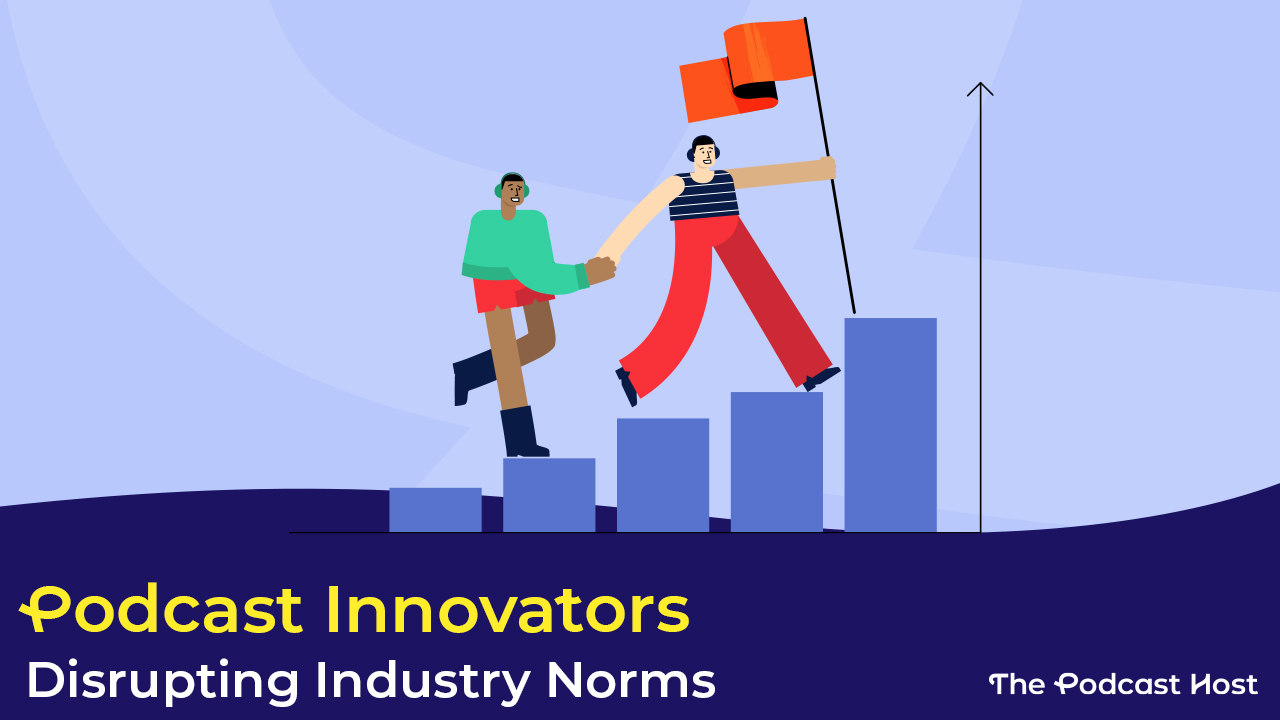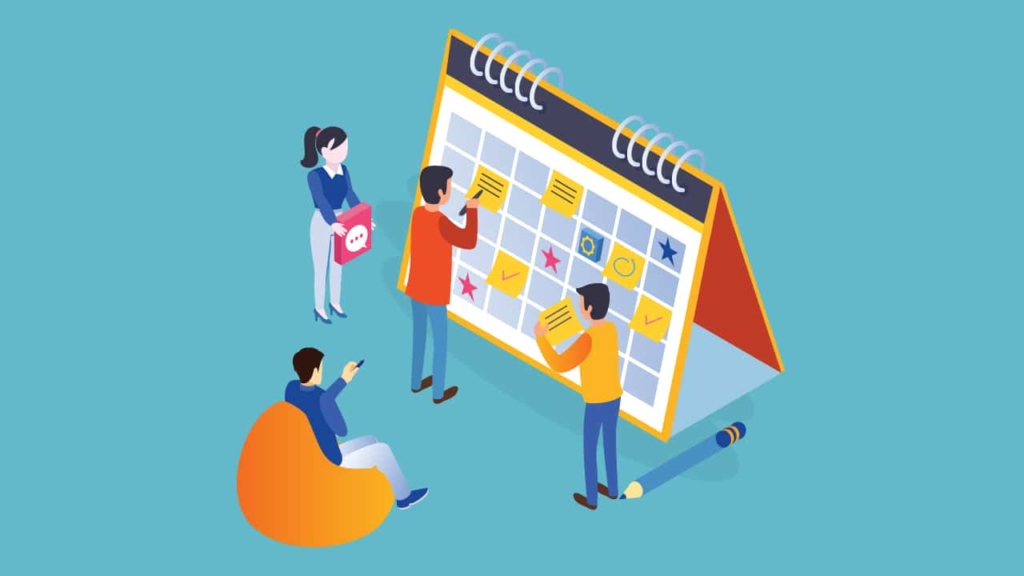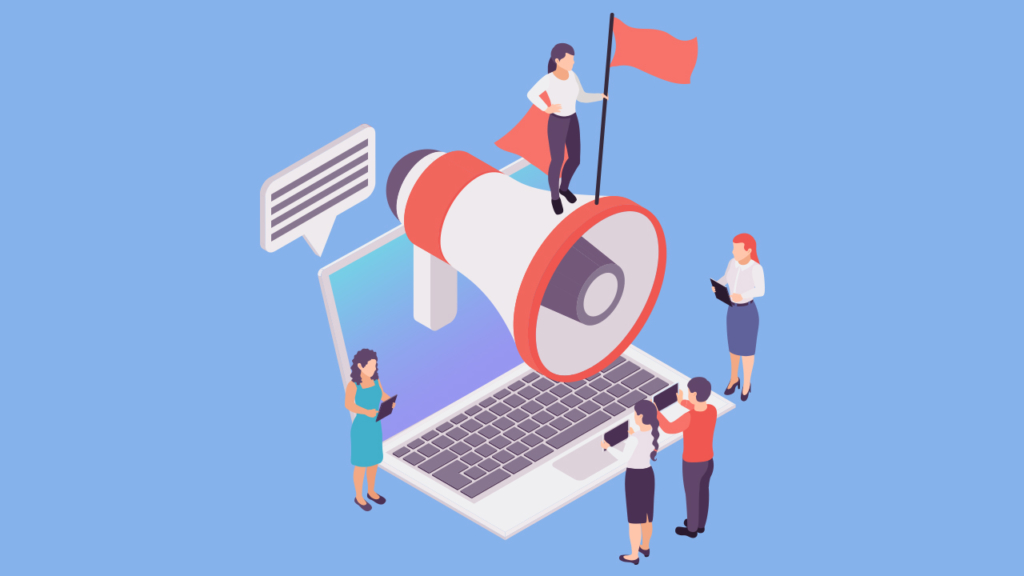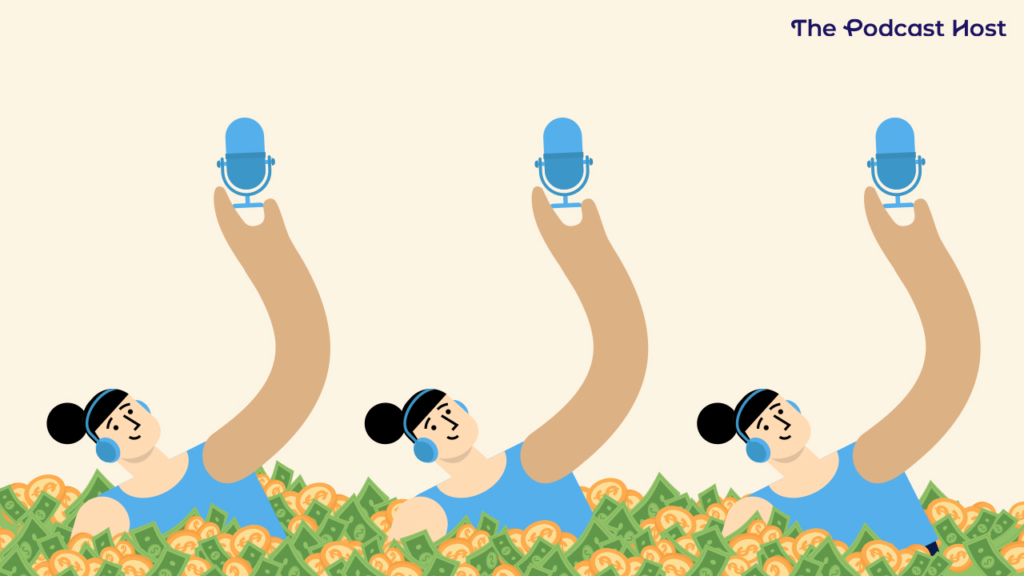Podcast Innovators Disrupting Industry Norms

As the new car smell of podcasting begins to wear off, I find myself questioning why we do the things we do. Conventional wisdom and best practices have their place. They’re the guardrails for podcasters speeding through wild west terrain. Yet, we still need podcast innovators to help us map the rest of the journey.
The Flashy Innovation
There’s lots of tech-focused innovation in the industry. I still don’t know what Web3 is or how to connect my podcast to my crypto wallet, or how to sell audio clips as an NFT. (how does that even work?) And I love automation and a new piece of gear with pretty buttons.
But technology isn’t the only place you’ll find podcast innovators. If you pay attention, you’ll see innovators quietly (or not) doing things differently. They’re the ones leaning into the ideals of podcasting– voice, access, transformation, and connection– to cultivate something different.
Embracing Impact Podcasting
These innovators are successfully and uniquely serving their audience as well as podcasting as a whole. By successful, I don’t mean popular or millionaire-making. They are industry innovators who are focused on impact. I’m highlighting five podcast innovators making waves in different parts of the industry. You should absolutely follow them.
Elsie Escobar & Jessica Kupferman

Elsie and Jess founded the She Podcasts community in 2014 because they “believe women have a unique challenge in getting their voices to be heard.” Full disclosure: I’m a woman, and I’m a member of their community. Because not having to worry about anyone sliding into my DMs while getting invaluable support is always a breath of fresh air.
They held the inaugural She Podcast Live in 2019. From the start, they vowed to do conferences differently.
In a recent article, Jess wrote, “You have to MAKE your conference different than the ones in the past. Like, on purpose. In some cases, with extra effort and new regulations that people aren’t used to or comfortable with.” On their show, She Podcasts, they often share the struggles of putting together a conference that aligns with their mission, vision, and values.
They Proved It Was Possible
What they created is a conference where only marginalized genders “take the stage.” They knew if they wanted to amplify these voices, they’d have to demand more of the industry. They have a policy that sponsors must demonstrate a commitment to representation and allyship. Businesses who want to work with them follow the policy.
And last year, they insisted their venue provide non-gendered bathrooms for the event. They got them. It was fabulous.
From their introvert/extrovert party to morning yoga to simply adding longer breaks between sessions, later start times for recharging, and ensuring plenty of true networking opportunities, they delivered a refreshing, energizing conference. It was the first time ever I returned from a conference ready and excited to dive into work. To me, that’s innovative.
What you can learn from Jess and Elsie: Don’t be afraid to lead with your values and if the community needs something, create it.
Molly Ruland

Molly founded the digital content agency HeartCast Media because she sees podcasting as a larger part of a clear, intentional digital content strategy for brands. No, that’s not the innovative part. It’s her approach that changes everything.
The traditional goal of branded podcasting is to reach a new audience. But for Molly, that new audience is not the listener. (gasp)
Molly wants us to imagine spearfishing (go with it). “You are going for a very specific target with a very specific tool,” she says.
She thinks branded podcasting is really a business development tool where “the guest is more important than the audience.” You’re not spearing the audience. You’re spearing the guest and forging a new, strategic relationship.
By virtue of having a podcast, you can pick the brain of someone you’d otherwise never have access to. It’s the ultimate networking and market research tool wrapped up in a larger marketing strategy. Molly wants her clients to leverage the opportunities holding the microphone brings businesses.
Asking a Better Question
Molly challenges us to think differently and well beyond New & Noteworthy. She says, “Your business will be far better served by creating relationships and showing that to the world versus trying to get in front of everyone who likes podcasts.”
The better question we should all be asking is, “Who will help you do more business this year,” Molly asserts.
If you want more mind-blowing tips, check out Molly’s podcast, The Next 100.
What we can learn from Molly: You define who you’re serving with your podcast.
Bethany Hawkins
Disruption: Challenging the idea you can’t land a sponsor before episode one
Innovation: Taking the concept of relationship building to monetization

Bethany is the CEO of the podcast management agency, Crackers In Soup. She also is my muse for this article because she told me she rarely follows traditional industry norms.
“Everything that I do in my business has a framework of personal connection because connection is the soul of my business,” You can hear this when you listen to her award-winning podcast, Chatting Over Chowder. Bethany added that simply thinking, because that’s how we do it in podcasting, “is almost never the answer.”
I asked Bethany how then, does she approach monetization through this unconventional lens. She answered monetization is all about building relationships. It’s how she landed a sponsor for her show before it was launched.
Love a Product? Offer a Sponsorship.
Bethany curated a relationship with the company that made a product she adored. She interacted with them on social media. She eventually asked if this company would like to sponsor a podcast. They set a meeting.
“I loved them. They loved me. They sponsored us!”
So, she doesn’t discourage her clients from episode one sponsorship. And she also wants us to think creatively because monetization isn’t only about audio ads.
“If you like a product and the company’s marketing budget is smaller, see if they are willing to pay for an IG story, a TikTok video, or a Twitter post.” You can sell social posts on any platform you and your audience are. These types of one-offs add up.
What you can learn from Bethany: Do it your way, even if it’s ‘not done’ in podcasting.
Mary Chan

Mary owns Organized Sound Productions, a podcast production agency serving women-led businesses and organizations. Mary’s background in voice-over and radio merged naturally with podcasting. Her show, The Podcaster’s Guide to Visible Voice, teaches podcasters how to harness and embrace their literal voice to connect with listeners.
She introduced to me the concept of ‘broadcaster voice.’ You know, the one you hear on the local news.
That voice is meant to sound low, and authoritative, with a heavy focus on sounding powerful and strong. Vocal fry and upspeak are frowned upon. It’s a very masculine-leaning voice.
Why? Mary says, “It is a way of controlling people’s voices (especially marginalized voices).” Despite podcasting being modern, accessible, and diverse, the industry is stuck in news anchor mode.
Mary dares us to ditch the outdated approach, not only when speaking but when editing your podcast. She knows that in podcasting, “…we need to focus on conversations with emotion and intimacy which represents our population.”
Disfluencies (filler words like ‘um’ and uh’), pausing, and varied tones “convey complex meanings, not weakness,” Mary advocates.
The old stereotypes need to go, Mary argues. “The power of sound is shifting.”
In fact, vocal imperfections are what Mary calls “emotional pillars.” They add emphasis and context to a story. And a well-timed ‘um’ cues the audience to lean in.
If I wanted to hear a broadcaster who never said, “um,” I’d ask Alexa to play our local radio station.
What you can learn from Mary: Embrace your voice to tell a better story.
Little Ripples Make Big Waves
Jess, Elsie, Bethany, Molly, and Mary, in different ways, create an impact by fostering connections. It’s podcasting’s greatest asset, and innovation happens when it’s applied in untraditional ways. These experts are consistently challenging the way we think, the way we create, and how we do business in podcasting.
Who isn’t being served, what are they asking for, and how do I provide it?
On the surface, it’s not revolutionary. But these are the innovations that change the way we do things, from putting together an industry event, defining our goals, challenging conventional thinking, and how we use our voice.
Unlike conventional broadcasting, the power of podcasting is in its niched-down, curated relationship with audiences. What the best podcast innovators do is remind the industry that we’re in a people-centric craft.
